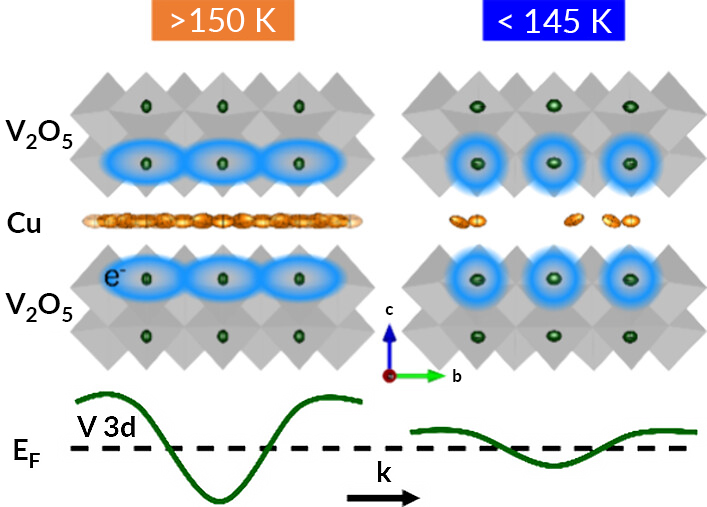With the rise of artificial intelligence and the increasing connectivity of our world through the Internet of Things, there is a need for more energy-efficient ways to process data. One solution is neuromorphic computing, an approach inspired by the human brain that uses artificial neurons to process information. Unlike traditional devices that store information as separate bits, neuromorphic devices use spikes—brief bursts of energy—to encode data through patterns of signal propagation, similar to how neurons communicate in the brain.
Mimicking spiking behavior requires an understanding of materials with subtle structural transformations. As described recently in the Journal of the American Chemical Society, a team of scientists collaborating through an Energy Frontier Research Center (EFRC)—Reconfigurable Electronic Materials Inspired by Nonlinear Neuron Dynamics (REMIND), led by Texas A&M University—uncovered the atomic-level mechanism for how a single crystal oscillator transforms from a conductive to an insulative state, opening the doors to the improved design of neuromorphic materials.
The material studied in this work, CuxV2O5, consists of two-dimensional layers of vanadium oxide with copper ions sandwiched between them. By growing single crystals of CuxV2O5, rather than working with films, the researchers were able to determine the precise correlation between atomic rearrangements and conductance switching or how the material changes its electrical conductance in response to stimuli. Diffraction experiments revealed how copper ions move within the material. Meanwhile, x-ray absorption spectroscopy (XAS) and resonant inelastic x-ray scattering (RIXS) at Advanced Light Source (ALS) Beamline 8.0.1 enabled the observation of electron delocalization and localization associated with the movement of copper.
“When you cool the crystal, we see that the copper ions form a checkerboard pattern between the two-dimensional layers,” said Sarbajit Banerjee, principal investigator of this study and professor at ETH Zürich. “Then, if you apply a voltage or heat it, the copper becomes disordered and the material becomes conductive.” In other words, this order and disorder of copper ions is what drives conductance switching, which can be used to mimic spiking behavior.
Much like how biologists understand how ion channels and neurotransmitters cause spiking, this work is a step in the direction of understanding what drives conductance switching in neuromorphic materials. The EFRC plans to systematically study more single crystals to build out design principles for neuron-like materials.
“This is difficult science, and it requires a team approach,” said Banerjee. “EFRC and user facilities like the ALS are great examples of how working in unison can help solve complex problems.”

J. Ponis, N. Jerla, G. Agbeworvi, S. Perez-Beltran, N. Kumar, K. Ashen, J. Li, E. Wang, M.A. Smeaton, F. Jardali, S. Chakraborty, P.J. Shamberger, K.L. Jungjohann, C. Weiland, C. Jaye, L. Ma, D. Fischer, J. Guo, G. Sambandamurthy, X. Qian, and S. Banerjee, “Atomistic origins of conductance switching in an ε-Cu0.9V2O5 neuromorphic single crystal oscillator,” J. Am. Chem. Soc. 146, 34536 (2024), doi:10.1021/jacs.4c11968.